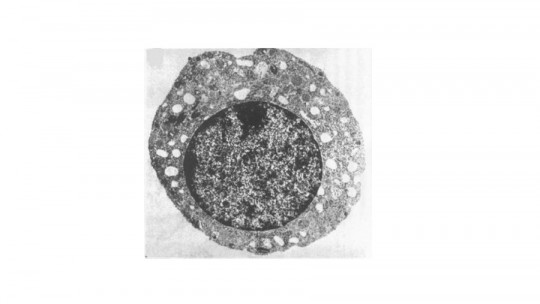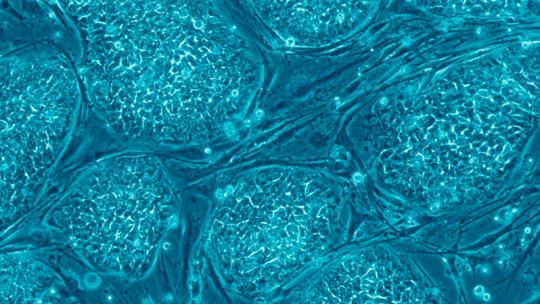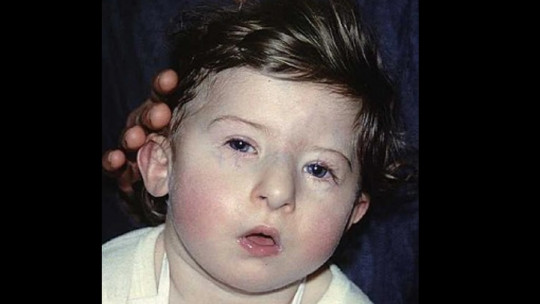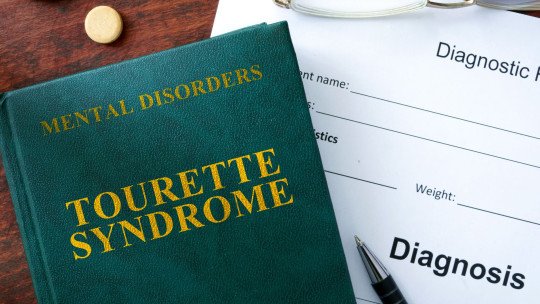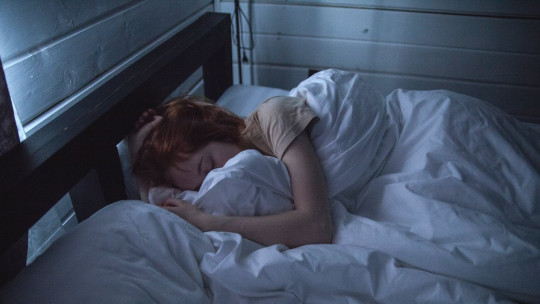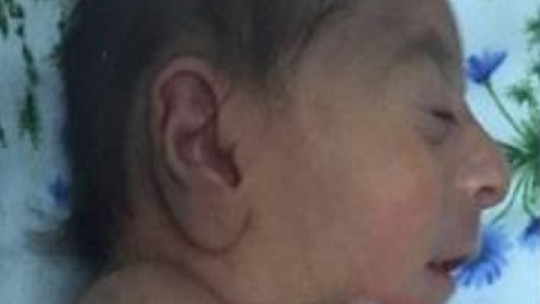Superior semicircular canal dehiscence syndrome (SDCSS) is a condition that affects balance. It is difficult to diagnose and patients normally relate it to panic attacks or other disorders of psychiatric origin. However, this syndrome has its origin in a problem in the development of the semicircular canals, small canals located in the inner ear that help us maintain balance.
In this article we will explain the origin of dehiscence syndrome, its strange symptoms and why it presents such a complicated diagnosis We will also see how it can be treated with medical help.
What is dehiscence syndrome?
Dehiscence is defined in medicine as the spontaneous separation between two adjacent structures or parts of tissue. Normally, it is used as a synonym for fissure.
Dehiscence syndrome refers to dehiscence of the superior semicircular canal of the inner ear The bone that covers this canal has a small hole. This is related to a problem in the development of the baby, it is believed that caused by the lack of growth of the upper bone that makes the bone lamina very thin, this condition could worsen as a result of a blow. But… Why does this affect balance?
How does balance work?
The ear is the organ of hearing but also of balance. It is made up of the outer ear, the middle ear and the inner ear. The inner ear is divided into the cochlea, vestibule, and semicircular canals. The cochlea is responsible for receiving and transmitting auditory information, and is where the hearing nerves are located
The vestibule and semicircular canals form the vestibular system. The vestibular system is responsible for maintaining balance and body posture, in addition to coordinating our movements and allowing us to focus on a specific point in space.
Both the vestibule and circular canals have cells sensitive to head movement and are filled with fluid, called endolymph. These cells have cilia (they are like small hairs), which act as receptors, capturing the movement of the liquid and transform it into nervous messages that they send to the brain for processing.

This system works in a particular way, it compares the information received from both ears. An increase or decrease in motion causes an increased or decreased signal. For example, if we move our head to the right, the right ear will generate a stronger nervous impulse than the left. This is how the brain understands head movement.
The vestibular system is especially sensitive For example, when we get on an attraction and we spin around a lot, we get dizzy, since due to inertia the liquid continues to move. Even though we have stopped moving, the nervous impulse continues to be transmitted to the brain. This causes unpleasant symptoms such as dizziness and vomiting.
Superior semicircular canal dehiscence syndrome
Although the cracks in the bone that covers the canal are small, they cause a variety of symptoms, from mild to disabling, such as dizziness, vertigo, headaches, etc. Not only the variety of these symptoms, but also their consequences make their diagnosis extremely difficult.
Many patients diagnosed with superior semicircular canal dehiscence syndrome report having suffered anxiety or panic attacks If we think about it, it is evident that living with frequent headaches, persistent nausea, blurred vision, loss of balance and other disabling symptoms, adding the fact of not knowing their origin, has serious consequences on our mood. In addition, these mental health problems could also have a physiological explanation related to the release of catecholamines. Because of these symptoms, many SDCSS patients are referred from psychiatry.
In fact It was Dr. Lloyd Minor, an otolaryngologist at John Hopkins, who discovered this syndrome in 1995 After that different patients will be sent to you from psychiatry. The patients’ symptoms did indeed originate in the head, but not from the place they were supposed to come from.
It is estimated that superior semicircular canal dehiscence syndrome is not that rare, and that Between 1% and 2% of the population have a very thin bone layer of the superior semicircular canals As we have seen, this condition may or may not end in a fissure. It is estimated that 33% of diagnosed patients will develop an upper ear canal dehiscence in each ear. In 10% of people who suffer from chronic vertigo, it could be caused by SDCSS, although many of these cases are not being diagnosed right now.
The discovery of SDCSS dehiscence syndrome
Dr. Minor was able to relate this syndrome to the damage found in the inner ear canals of a group of pigeons, in which strange eye and head movements were observed. The patients also presented a response to changes in pressure and sounds that affected the vestibular system.
Subsequently, a prevalence study on temporal bones revealed a percentage of patients in whom the bone covering the superior semicircular canal was very thin. Since there was no pathology that could explain the alteration of the bone, nor any trauma, in addition to the condition occurring in both ears, the researchers concluded that the most likely explanation was an alteration in development. Since the bone layer is so thin, a sudden change in pressure or a blow can cause a crack and the appearance of serious symptoms
Symptoms of superior semicircular canal dehiscence syndrome
Unfortunately, the diagnosis of superior semicircular canal dehiscence syndrome comes late. It usually goes unnoticed until its symptoms worsen and they go from dizziness or imbalances to disabling symptoms such as very intense headaches or recurrent nausea.
Patients usually have had severe symptoms for at least more than a year or are referred by a psychiatrist who cannot understand where the psychological alterations presented come from and senses an origin that is not cerebral. Many of the patients may have been in psychiatric treatment for years due to recurrent anxiety or panic attacks and it is not until, due to a change in pressure or trauma, that the symptoms of SDCSS become more severe that they can then be diagnosed.
In most cases, patients usually present imbalance and vertigo. However, the difference in the way patients report symptoms makes diagnosis difficult and many cases go unnoticed. Finally, after a long wait they can have a diagnosis. Many may have isolated themselves due to this condition.
The most common symptoms are vertigo (accompanied by frequent dizziness), oscillopsia (they have the impression that objects are moving when they are actually still), autophony (they hear their own sounds such as blinking and breathing much louder than normal), very sensitive to loud sounds, and a constant feeling of pressure, as if the ears were full.
The psychiatric comorbidities that some patients present as a result of their SDCSS are: anxiety, panic attacks, feeling unstable, depression , among other. These, in addition to having a psychological explanation, could derive from the release of a large amount of a type of catecholamines. Catecholamines are important neurohormones in the stress response; in high concentrations they can cause severe chest pain, palpitations and anxiety. The abnormal vestibular stimulation that occurs in SDCSS could cause its massive release.
Treatment of superior semicircular canal dehiscence syndrome
To diagnose SDCSS, it is necessary to delve into the patient’s history and the symptoms they have been experiencing throughout their life, specifying in which situations they appear or worsen and when they have worsened, and if they have done so as a result of an event. concrete (a plane trip, a trauma, a visit to the dentist, etc.).
The doctor may include several tests to confirm the diagnosis; A brain CT scan of the patient’s temporal bone is normally performed where you could see if there is indeed a fissure in the bone that covers the superior semicircular canal.
Also the patient can undergo a hearing test and a PVME (evoked myogenic vestibular potential). The PVME is a recent diagnostic test that is used to evaluate the response of the vestibular organs and determine their status. Insertion headphones and electrodes are used that are placed at the level of the sternocleidomastoid to record potentials. Patients with SDCSS have increased sensitivity to sound. This test can help determine the area of injury to the inner ear, and therefore can identify whether it is upper canal dehiscence syndrome.
In many patients, treatment consists of not exposing themselves to activities that could trigger symptoms , such as climbing to great heights, boat trips, fairground attractions, etc. Also, physical therapy is recommended to improve position and balance, and reduce the risk of falls.
Patients with dehiscence of the upper canal with much more serious and disabling symptoms for their daily life, can undergo surgery to close the bone fissure. This surgery has offered good results and allows to relieve or reduce the symptoms of the pathology. However, sometimes after the operation, symptoms can worsen, this is usually because the patient has bilateral SDCSS and both ears must be treated and checked.


